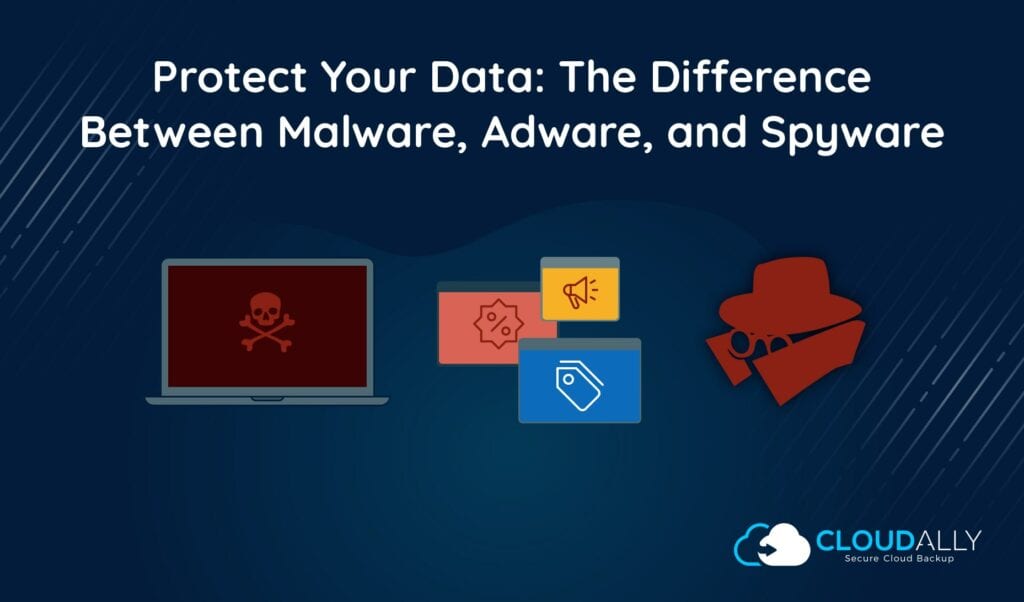Defending Against Digital Threats: Malware, Adware, and Spyware Explained
Short for malicious software, malware comes in many varieties of forms. Viruses and worms, named because of their ability to quickly spread through your system by digging in deep and making copies of themselves, are probably two of the best-known malware types, which is why malware protection is needed.
Another well-known malware is the Trojan which infects your computer secretly, coming in through a perceived safe link or website. Like viruses, this malware infects your computer sometimes to the point of having to reset the entire system.
Malware began with the dawn of the internet. In the past, software creators of this nature were a few high school computer gurus blowing off steam and playing pranks on unsuspecting visitors. However, criminals who are looking for ways to make easy money engineer today’s malicious software.
Some ways malware infects your computer are:
- Visiting an infected website
- Clicking on an infected pop-up
- Opening an unknown, infected email attachment
- Visiting an infected link sent via email
- Downloading files off the internet without running an antivirus scan on them first
A new virus, known as ransomware, locks users out of their systems entirely. Once locked out the infected party must either pay the infector a fee to resume use of their computer or completely reset the drive, a complete reset results in loss of all data and applications that were not initially on the unit at the time of purchase. Failure to pay the ransom results in the same damage.
Adware
Adware is slightly different. While benign in comparison to other malware, this software can still be an annoying leech on your computer’s resources.
Companies across the globe use Adware to track your movements online and display ads that are relevant to your browsing experience. In most cases, adware will not do any damage to your computer nor will it steal personal information. It is merely a tool used by marketing consultants to put relevant ads where you see them.
In most cases, adware works with your knowledge. Most sites alert you to the fact they are collecting information about your interests for this purpose. However, on occasion, sites install this software without your knowledge. When this happens, the benign software has crossed into malware territory and leaves you vulnerable to further attacks.
Programmers sometimes use adware to fund their program development. They bundle ads with free software and deactivate the advertisements once the user purchases or registers the title. Use of ads is standard practice for free mobile applications.
Adware is tricky to remove. As most titles are only marketing tools, antivirus software sometimes overlooks these programs.
Spyware
A type of malware, spyware is far more insidious than most other types. While viruses and trojans are problematic and can shut down your system, spyware tracks your every move. Each keystroke and mouse click is then relayed back to a third-party without your knowledge.
The big problem with spyware is the fact it is hard to detect. Anti-virus software may be able to stop installation or remove already installed versions. However, if your anti-virus does not have an anti-spyware bundled with, it may overlook these programs.
Spyware can infect your computer many ways. In some cases, it is installed by visiting an infected website or opening an infected link or attachment sent via email. Most spyware comes from downloading software from file-sharing sites. Hackers who put free movies or music files on these websites bundle their spyware alongside so you do not know it is downloading.
Indicators that your system has a spyware infection include:
- Searches redirect you to a different search engine
- Random error messages during routine operations that previously worked
- Unidentifiable or new icons appearing on the taskbar
Spyware allows the third-party owner not only to see what you are doing, but gain access to your usernames, passwords, and bank and credit card account numbers.
What You Can Do to Protect Yourself – Malware Protection !
Companies often have several layers of protection to keep malicious files out using firewalls and anti-virus software. However, from time to time, an email or website can get through the company shielding allowing malicious software through.
The first step for both large and small businesses is to educate employees on the different methods a malware, spyware, or adware infection occurs. Employees need to know how to spot a suspicious email and whom to contact within IT to prevent future attacks.
In addition to education, your company should have backup redundancies in place to protect sensitive data. Having a backup of essential files allows IT technicians to reset infected computers without worrying about losing information.
Storing files locally is one option. However, the local backups must be kept off the internal network to prevent potential corruption or infection from malicious attacks. The use of cloud storage helps protect documents while keeping them off local network which could potentially be damaged through a single computer infection. When choosing a cloud service provider, check for their security protocol to ensure the safety of your data from hackers who may use rants somewhere to attack your company in this manner.
It is also a good idea to back up your backups. If you store items locally, you should also store them in the cloud. Cloud providers should also be backed up using services such as offered by CloudAlly. Our service allows you to backup files stored in OneDrive, Box, and Google Drive. It also enables you to backup sensitive emails for those using G Suite or Office 365.
Education, protective software, and backups are essential to protecting your company from malicious attacks.


